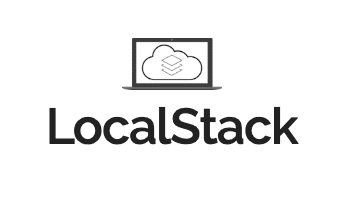Article summary
On my current project, we’re using LocalStack in lieu of AWS for development and test. In this post, I’ll walk through how we’ve set it up and what we can do with it.
LocalStack?
LocalStack is a collection of AWS-compatible services you can run yourself. It’s meant for development and testing, not as a target to host real production instances of your application.
It doesn’t cover 100% of the AWS alphabet soup, but it implements many of the most popular services.
Getting Started
The easiest way to fire up LocalStack is to run its public Docker image:
docker run -t -i localstack/localstack
While this is technically running a bunch of services, it’s not very useful without a little bit of configuration. Create a docker-compose.yml based off the project’s, and adjust its configuration for your needs. For example, my project currently uses s3, iam, and lambda on LocalStack 0.10.5:
version: "2.1"
services:
localstack:
image: localstack/localstack:0.10.5
ports:
- "4567-4597:4567-4597"
- "${PORT_WEB_UI-8080}:${PORT_WEB_UI-8080}"
environment:
- SERVICES=s3,iam,lambda
- DEBUG=${DEBUG- }
- DATA_DIR=${DATA_DIR- }
- PORT_WEB_UI=${PORT_WEB_UI- }
- LAMBDA_EXECUTOR=docker-reuse
- KINESIS_ERROR_PROBABILITY=${KINESIS_ERROR_PROBABILITY- }
- DOCKER_HOST=unix:///var/run/docker.sock
volumes:
- "${TMPDIR:-/tmp/localstack}:/tmp/localstack"
- "/var/run/docker.sock:/var/run/docker.sock"
Fire this up with:
TMPDIR=/private$TMPDIR docker-compose up
(The TMPDIR thing is a workaround for a MacOS-specific issue).
To access services with AWS CLI, configure bogus credentials (they aren’t checked) and specify a custom endpoint with the appropriate port.
> aws configure
AWS Access Key ID [None]: foo
AWS Secret Access Key [None]: bar
Default region name [us-east-1]:
Default output format [None]:
> aws --endpoint-url=https://localhost:4572 s3 mb s3://local-bucket
make_bucket: local-bucket
> aws --endpoint-url=https://localhost:4572 s3 ls
2006-02-03 11:45:09 local-bucket
Terraform
We’re using Terraform (a cross-platform Infrastructure-as-Code tool) to provision resources in AWS. We use it for LocalStack too!
Terraform documents how to target LocalStack, which entails customizing the AWS provider with custom endpoints and a few other options.
In order to use the same Terraform scripts to target both LocalStack and AWS (when they use different provider configuration and state backends), we have two separate Terraform projects (i.e. entry points) referencing a shared module:
# remote
terraform {
backend "s3" {
bucket = "foobar-terraform"
key = "state"
region = "us-east-1"
}
}
provider "aws" {
region = "us-east-1"
}
module "foo-bar" {
source = "../foo-bar"
env_name = terraform.workspace
}
# local
terraform {
backend "local" {}
}
provider "aws" {
access_key = "mock_access_key"
region = "us-east-1"
s3_force_path_style = true
secret_key = "mock_secret_key"
skip_credentials_validation = true
skip_metadata_api_check = true
skip_requesting_account_id = true
endpoints {
s3 = "https://0.0.0.0:4572"
lambda = "https://0.0.0.0:4574"
iam = "https://0.0.0.0:4593"
}
}
module "foo-bar" {
source = "../foo-bar"
env_name = "local"
}
Now we can terraform apply to create local instances of our project’s AWS resources.
CircleCI
We can run our backend services locally, but we also want to use them in CI. My efforts to get LocalStack running in CircleCI spanned two approaches: using Circle’s docker and machine executors.
Docker Executor
The Docker executor is faster and cheaper, so I prefer to use it when I can. With it, we can configure multiple Docker containers that our job depends on:
jobs:
docker-job:
docker:
- image: circleci/node:12 # <-- the job steps run in this container
- image: localstack/localstack:0.10.5 # <-- this is spun up for us by Circle
environment:
DEBUG: 1
SERVICES: s3,iam,lambda
environment:
AWS_DEFAULT_REGION: us-east-1
AWS_SECRET_ACCESS_KEY: foo
AWS_ACCESS_KEY_ID: bar
steps:
- checkout
- aws-cli/install
- aws-cli/setup
- install_terraform
- run: env
- run:
name: Wait for localstack ports
command: ./wait-for-localstack-ports.sh
- run:
name: aws stuff
command: |
aws --version
aws --endpoint-url=https://localhost:4572 s3 mb s3://local-bucket
aws --endpoint-url=https://localhost:4572 s3 ls
- run:
name: terraform
command: |
terraform init -input=false
terraform apply -auto-approve -input=false
- run:
name: lambda
command: |
aws --endpoint-url=https://localhost:4574 lambda list-functions
This gets us pretty far, but on my project, we hit a wall with Node.js Lambdas in this environment. For a handful of languages, localstack currently requires configuring LAMBDA_EXECUTOR=docker, which spins off separate Docker containers for each Lambda invocation. This doesn’t work trivially on Circle. It may be possible to get something working with [remote docker], but we instead moved to the Machine Executor.
Machine Executor
Circle’s Machine Executor runs in a conventional Linux VM rather than a Docker container. In this environment, we can run docker-compose, just as we do locally. LocalStack’s LAMBDA_EXECUTOR=docker works as expected, and we can invoke our Node.js lambdas functions.
machine-job:
machine:
image: ubuntu-1604:201903-01
environment:
AWS_DEFAULT_REGION: us-east-1
AWS_SECRET_ACCESS_KEY: foo
AWS_ACCESS_KEY_ID: bar
steps:
- checkout
- run:
name: docker-compose up
command: docker-compose up
background: true
environment:
TMPDIR: ~/localstack
DEBUG: 1
- aws-cli/install
- aws-cli/setup
- install_terraform
- run:
name: Wait for localstack
command: |
./wait-for-localstack-ports.sh
sleep 2
./wait-for-localstack-ready.sh
- run:
name: aws stuff
command: |
aws --version
aws --endpoint-url=https://localhost:4572 s3 mb s3://local-bucket
aws --endpoint-url=https://localhost:4572 s3 ls
- run:
name: terraform
command: |
terraform init -input=false
terraform apply -auto-approve -input=false
- run:
name: lambda
command: |
aws --endpoint-url=https://localhost:4574 lambda list-functions
aws --endpoint-url=https://localhost:4574 lambda invoke --function-name ExampleLambda /dev/stdout
What’s Next
Now that we can run our own AWS services locally and in CI, what can we do with them? Here are a few highlights from my recent experience:
- Run your full stack locally (local client targeting local server). Lose your internet connection, smile smugly, and keep working.
- Iterate on terraform infrastructure without affecting cloud resources shared by other team members.
- Write system tests for your lambda functions, invoking them programmatically with the AWS SDK (as opposed to solely unit-testing their internals).
I hope this post has given you an idea for how you might use LocalStack on your projects. An example repo covering much of the content of this post can be found on GitHub.


endpoints {
s3 = “http://0.0.0.0:4572”
lambda = “http://0.0.0.0:4574”
iam = “http://0.0.0.0:4593”
}
0.0.0.0 is an invalid, non routable, non addressable, unknown address, used for inbound.
You don’t need to know 3 ways handshake or python interfaces but what IPv4 it is …